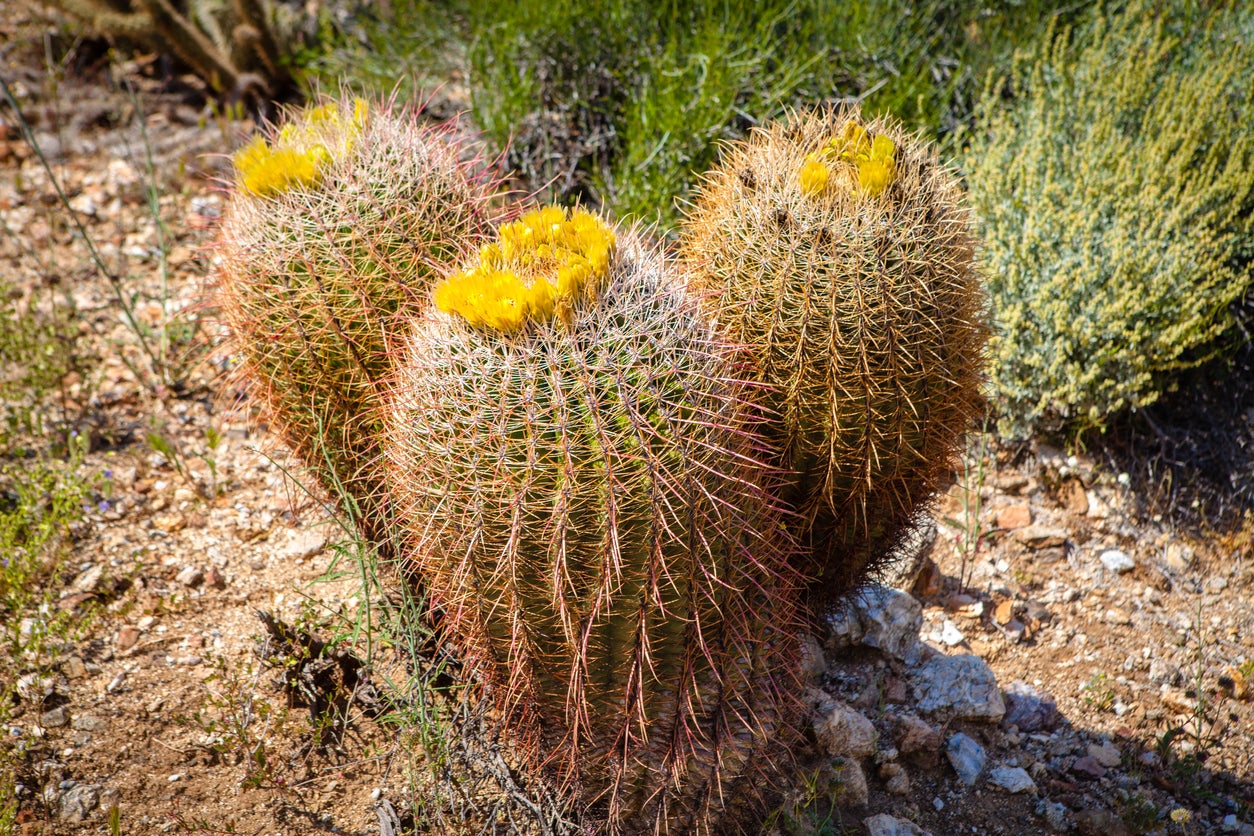Compass Barrel Cactus Facts – Information About California Barrel Cactus Plants


There are a few different plants that go by the name “barrel cactus,” but Ferocactus cylindraceus, or California barrel cactus, is a particularly beautiful species with long spines that is threatened in nature due to its over harvesting by collectors. Keep reading to learn more California barrel cactus information.
California Barrel Cactus Information
The California barrel cactus (Ferocactus cylindraceus) goes by several common names, including Arizona barrel, red barrel, miner’s compass, and compass barrel cactus. However, all these names refer to the same cactus, a native to the Mojave and Sonoran deserts in the American southwest.
California barrel cactus plants grow very slowly, starting out stout and spherical and eventually lengthening into cylinders, sometimes reaching up to 8 feet or roughly 2.5 meters in height, with a width of about 1.5 feet or 0.5 meters. They very rarely branch out and, true to their name, form solitary, stout, barrel-like columns.
They are covered from head to toe in long spines that can range wildly in color from red to yellow to white. As the cactus ages, these spines tend to fade to more of a gray color and curve around the cactus.
There are three distinct types of spine - a long central spine reaching up to 5 inches (13 cm.), 3 surrounding shorter spines, and 8 to 28 short radial spines. These clusters of three types of spine cover the cactus so completely that it’s difficult to see the green flesh underneath.
In spring and early summer, yellow flowers with red centers appear on the side of the cactus that faces the sun.
Growing a California Barrel Cactus
California barrel cactus plants, like most desert dwellers, prefer rocky or sandy, extremely well-draining soil, as well as full sun. They are very drought hardy and resistant to pests.
Sign up for the Gardening Know How newsletter today and receive a free copy of our e-book "How to Grow Delicious Tomatoes".
They tend to grow faster on their shady side (in their native habitat the northern side), causing them to lean to the south or southwest. This earns them their alternate “compass” name and gives them an attractive, unique silhouette.
They make very good solitary specimens in rock gardens and desert landscapes.

The only child of a horticulturist and an English teacher, Liz Baessler was destined to become a gardening editor. She has been with Gardening Know how since 2015, and a Senior Editor since 2020. She holds a BA in English from Brandeis University and an MA in English from the University of Geneva, Switzerland. After years of gardening in containers and community garden plots, she finally has a backyard of her own, which she is systematically filling with vegetables and flowers.